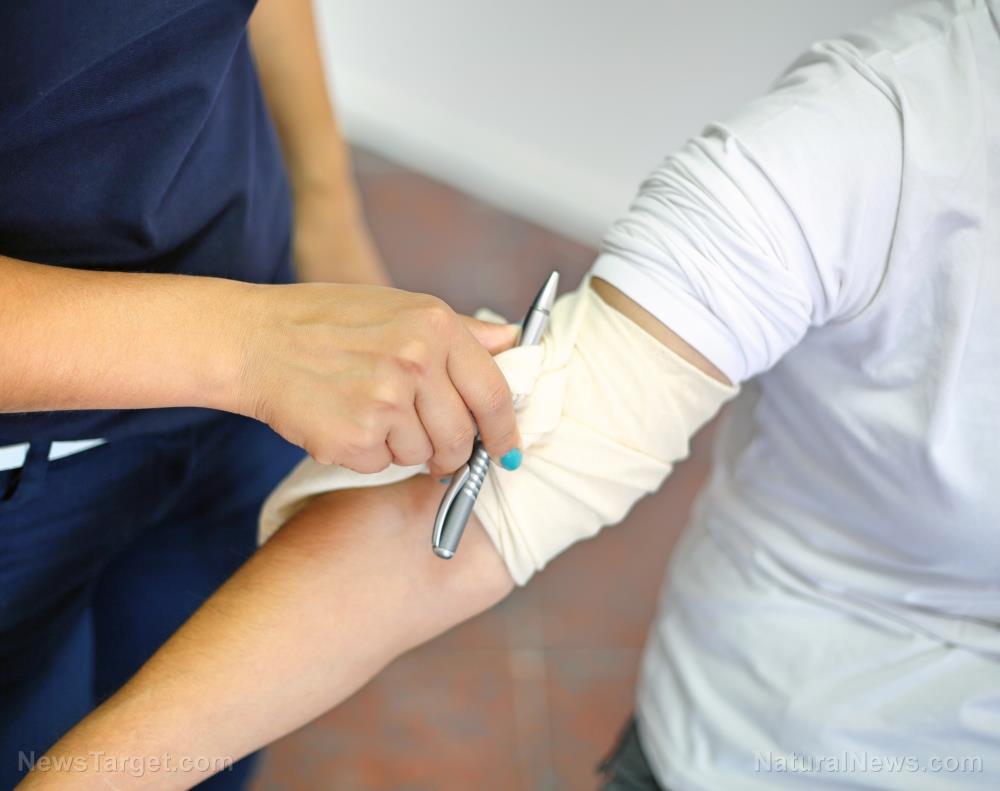Basic outdoor survival skills that will help you when SHTF
04/21/2023 / By Zoey Sky

Spending time learning different skills can help you survive in the wilderness when SHTF.
Prepare by learning basic outdoor survival skills like hunting, fire starting or first aid so you can survive if you get lost in the wilderness. (h/t to PeparedSurvivalist.org)
Basic first aid techniques
Before SHTF, sign up for first aid classes so you can master basic first aid techniques. It’s best to learn how to provide first aid with and without your first aid kit so you’ll know what to do in case you lose your survival gear.
Cut and scrape first aid
During a disaster, you shouldn’t ignore small cuts because they can get infected and result in a worse injury. If you have a small cut or scrape, keep the wound clean and monitor it for signs of infection.
If the injury is deep and you can’t stop the bleeding, apply a tourniquet to stop the flow of blood.
Tourniquets should be at least one inch wide. If you don’t have one, you can use a strip of cloth or a belt. Tighten the tourniquet around the limb above the injury until the bright red bleeding stops. Cover the injury with bandages, gauze or any clean material.
Fractures and dislocations
If you dislocate a bone, it’s important to get it back in place. If you have a dislocated shoulder, carefully roll on the ground or hit it against a hard surface to reset the bone. For kneecaps, pop it back in place by stretching your leg out and forcing it into the socket.
If someone has a fracture, you need to find suitable materials to create a splint. If you are outdoors, look for a couple of sturdy sticks.
Stabilize the fractured bone with the sticks and tie them together with shoelaces or paracord to hold the brace in place.
Self-protection
The Boy Scouts recommend a simple approach for self-protection against wild animals like cougars, coyotes and wolves: Face the animal and slowly back away from it. Don’t play dead, run away or approach the animal.
If a wild animal corners you, try to make yourself as big as possible. Spread out your arms and make a lot of noise. If this doesn’t work, throw anything at the animal to scare it away. (Related: 20 Wilderness survival tips that might save your life after SHTF.)
Building a survival shelter and fire starting
When you’re lost in the woods, you need shelter for protection against the elements.
You don’t need to build something complicated, especially if you don’t have a lot of resources or are too weak to work too long.
The A-frame shelter is one of the simplest shelters you can build in a hurry. It can offer adequate protection against the sun, winds or light rains.
The A-frame shelter should be built close to the ground for maximum protection. You can suspend it higher to provide coverage from rain, but doing so will allow more airflow underneath.
After you select a safe and suitable shelter site, you should have your tarp hung up in 10 minutes or less. Start by suspending a line of cordage between two trees or similar supports. Lay the tarp over the line and tie down all four corners of your tarp. If you don’t have a tarp, use a sturdy poncho.
According to firefighters, you should keep two things in mind before building a fire: The wind direction and the surrounding area.
You need a campfire to stay warm and signal for help, but you don’t want the entire forest to go up in flames just to attract the attention of rescuers.
The U.S. Department of Agriculture Forest Service (USDA Forest Service) recommends building your campfire away from things that can accidentally catch fire, like dry grass, leaves, overhanging branches, logs or rotten stumps.
Learn how to start a fire without matches or a ferro rod so you can stay warm even if you lose your gear.
Finding water to drink
You can find water in many parts of the U.S. by following the sound of a flowing river.
But if you are in an area without a river nearby, these tips should help you find water:
- Grazing animals will often head for water near dawn and dusk. Following them can help you find a body of water.
- Flies and mosquitoes will often stay within 400 feet of water.
- You can gather dew that hangs on the grass in a field. Collect dew by running a clean piece of cloth through the grass as you walk.
- Stagnant water is not safe to drink even if you can boil it in your campfire.
Finding edible plants: the “big four”
Here are some tips that will help you remember plants indigenous in most areas:
- Acorn from oak – The entire nut is edible and they’re easy to stockpile.
- Cattail – Cattails are a great survival food because you can eat most of the plant. The base stalk can be eaten like celery while the root and tuber can be used to make flour. Cattail pollen also offers some health benefits.
- Pine –The nuts and inner bark of the tree are edible. You can make pine needle tea if you can’t find anything else to eat.
- Grass – The corm (base) is starchy but edible and filled with water and carbohydrates.
Universal Edibility Test for safe foraging
When foraging in the wilderness, it’s important to know the Universal Edibility Test to ensure your safety.
The test requires taking different parts of the plant and testing each on several parts of your body to ensure that the plant is safe to eat.
Try placing a small piece of the plant against your lip and tongue and finally in your mouth. Wait for eight hours for any sign of an allergic reaction. If there’s none then you can be sure that the plant is safe for consumption.
Before SHTF, learn basic survival skills like foraging and fire starting so you can stay alive even if you get lost in the wilderness.
Watch the video below to know more about tools you will need when foraging for wild edibles.
This video is from the Daily Videos channel on Brighteon.com.
More related stories:
10 Prepper skills that will help improve your street-smarts.
10 Essential outdoor skills that will help you survive when SHTF.
What are skills, rules and principles that will help you survive the wilderness alone?.
Sources include:
Submit a correction >>
Tagged Under:
bug out, disaster, emergency medicine, first aid, Gear, off grid, preparedness, prepper, prepping, prepping tips, SHTF, survival, survival gear, survival hacks, survival medicine, survival skills, Survival Tips, survivalist, wilderness survival
This article may contain statements that reflect the opinion of the author
RECENT NEWS & ARTICLES
EmergencyMedicine.News is a fact-based public education website published by Emergency Medicine News Features, LLC.
All content copyright © 2018 by Emergency Medicine News Features, LLC.
Contact Us with Tips or Corrections
All trademarks, registered trademarks and servicemarks mentioned on this site are the property of their respective owners.




















